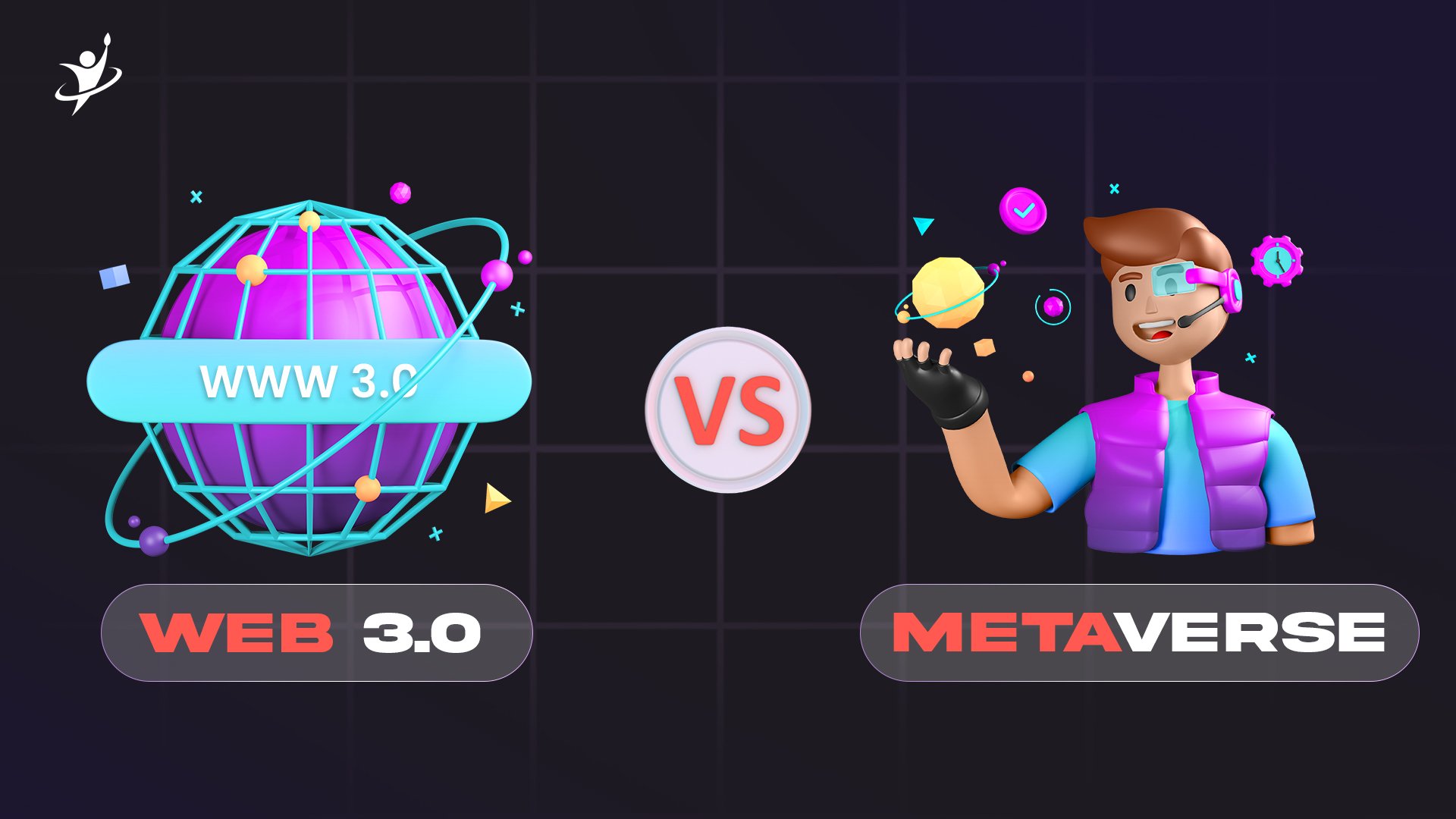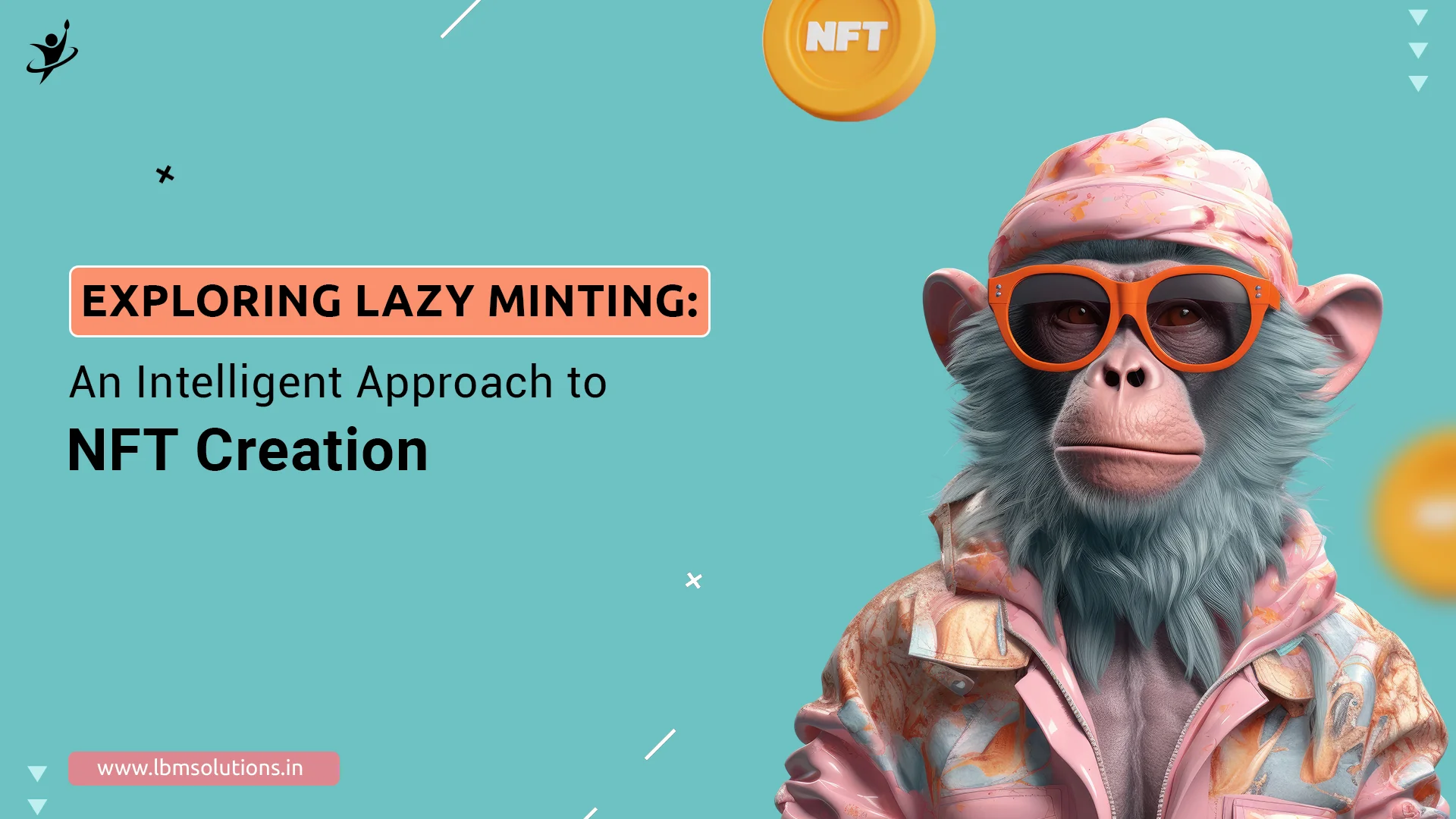Two terms that are generating a lot of hype and excitement in the world of business technology right now are Web3 and metaverse. Recent interest in the development of metaverse is influenced by Web3, a concept for a decentralized iteration of the internet. In other words, web3 is a decentralized internet – built on the distributed technology known as blockchain.
This blockchain technology operates as a decentralized organization, rather than a centralized one which has servers owned by individuals or corporations.
The idea is to create a more democratized Internet. In which no single entity will be able to control the flow of information, or kill a network, simply because they own the hardware it’s running on.
Metaverse
Metaverse is the next-gen technology that enables us to create our virtual world in the cloud. Metaverse technology is the most advanced innovation in the digital world so far. From the era of in person socializing to the 2nd generation of the internet and social platforms like Facebook, Instagram, etc, to this overwhelming technology of literally getting inside the virtual world and living there for all sorts of purposes which we happen to do in our daily physical lives.
Yes, Metaverse is still in its infancy stage, but IT geeks are already living this new notion of a man-made virtual universe. And according to the present trend, the whole dynamics of once a simple life will change and evolve with the rapidly changing times and trends.
Enough is said about the changing trends of the ongoing world, and as we all know, necessity is the mother of all inventions. So here we are! Blockchain technology– which is the foundation upon which Metaverse got built.
How Do You Define Metaverse?
Frankly, it’s according to the reader’s level of intellect, i.e., how well versed he is in blockchain and IT Technology. But a general and fit to all definition would be that it is a digital space that will always stay inside a virtual world where the users, with the help of other advanced technologies like augmented reality and virtual reality kits, can interact among themselves through their 3D avatars. And these users, via their avatars, can probably do everything they do in the real physical world.
Let’s Take A sneak Peek inside Features of Metaverse:
- Avatars
A 3D avatar is the user’s digital identity inside the Metaverse that helps users to interact and participate in day-to-day activities (like the way we do in real life). Most Individuals make avatars as their own representation, but with advancement in the Metaverse now, you can customize your avatars to any extent OR make him look like Donald Trump (Oh No! Other Donald Trump in the Meta Space, LOL)
- Teleporting
Teleporting is something that few brilliant minds dream of in real life, but it has already begun in the Magical Meta space. Teleporting in the Metaverse allows such Avatars to move freely from one door to another door of your own creative thinking. People roam freely and switch places between different platforms inside the Metaverse. Yes, Metaverse is a magic land.
- Virtual Products & Services
Virtual products of top-notch elite clothing brands are exclusive and a hot property to invest in their metaverse version product line. In fact, they are as expensive as they are for their physical value. Many shopaholics like yourself are willing to spend that extra cryptocurrency to buy digital representations of these products. Undoubtedly it is becoming a next-gen fashion hub for the entire world.
- NFT/ MV Tokens
Cryptocurrency ensures quick buying and selling of anything, whether it’s about shopping for products, buying real estate, or for that matter, tickets to our all-time favorite Travis Scott’s concert. NFT and ZMV Tokens are used in Metaverse to trade any digital assets, whether purchasing gaming assets or selling any other digital service inside Metaverse.
- AR-VR
Augmented reality and virtual reality are the backbones of the Metaverse. Because of this technology, users can feel an immersive experience when they come in contact with the virtual world. AR-VR technology is the most essential feature of Metaverse because it gives the Avatars a sensory perception like touch, smell, sound, etc. because of this technology, Metaverse makes users feel alive.
Web 3
Web 3.0 got its name from the 3rd generation evolution of the world wide web. It seeks to establish a decentralized, trust-free Internet where no single entity, organization, or leader holds power over the Internet. With Web3, users can take advantage of unprecedented security, transparency, and immutability through the use of blockchain technology. Web3 is a global peer-to-peer network consisting of numerous nodes working separately from each other.
Few Features & Components of Web3
- Semantic web
The concept of the Semantic Web is a cutting-edge AI technology that uses natural language processing to understand better what you are searching for on the internet. It’s designed, in part, so users don’t need keyword searches or numbers when they want information – instead, their request is answered based on the meaning behind those words!
- Artificial intelligence
As a result of Web3’s artificial intelligence, websites and online services alike can provide more relevant results based on what they are searching for since nobody (other than Web3) knows precisely how much information needs to be entered.
- 3D graphics and spatial web
Web3 is the new evolution of the internet. It’s powered by AI and designed to deliver more relevant results for users who can enjoy an immersive 3D experience without ever leaving their seats with just VR headsets on hand!
- Blockchain
The blockchain plays its part, too – it enables a decentralized process to conduct transactions by clearly eliminating third-party intermediaries. Blockchain technology also helps to make transactions at lightning speed while ensuring fully encrypted data privacy, which protects your personal information at every point, and cryptography keeps the digital economy safe.
- Ubiquitous connectivity
In Ubiquitous computing, computers and communication are embedded in our surroundings so that anyone can use them at any time. Ubiquitous connectivity refers to a technology that is everywhere and that anyone can use simultaneously at any time.
Differences between Metaverse & Web 3.0
Metaverse and Web3 are two different technologies, but both have the potential to revolutionize the way we interact with the internet. Metaverse is a subset of Web3, but both are blockchain-based platforms with their own unique advantages.
- Metaverse is a blockchain-based virtual world, while Web3 is the next generation of the internet.
- The Metaverse is a digital world where you can interact with three-dimensional objects in virtual reality. With virtual reality headsets, the Metaverse will help users interact with other users and objects in the virtual space.
- Whereas Web3.0 is the elaboration of the approaches through which users control their digital entities and other virtual assets. Web3.0 has enabled users to create and produce content and gives users the power to control and monetize it.
- Metaverse offers users an immersive experience with its 3D virtual world. Whereas Web3 provides users with more control over their data and security.
- Metaverse is still in development, but it can potentially be a significant player in the VR/AR industry.
- Web3 is an open-source and decentralized public network, meaning anyone can use it, and there is no single point of failure.
- Metaverse focuses on creating a virtual world, while Web3 is focused on creating a decentralized internet.
- The Metaverse has different technologies for enabling the whole ecosystem. You would need connectivity, interfaces, decentralization, and other enabling technologies for developing the Metaverse.
- Web3.0 is concentrated on creating a decentralized web that would run on the blockchain, and it includes cryptocurrencies only. Web3.0 can also perform public blockchain functions to enable permission less access for any individual within that network.
- Metaverse aims at establishing an entirely virtual world with its three-dimensional VR technology — setting up new dimensions by combining Web3 tech advances like blockchain-based smart contracts.
- Web 3.0 is the next generation of the internet that wants a democratic and decentralized environment for users where they can be owners or shareholders in their own lives, not having to follow any predetermined rules or regulations.
- Metaverse is a recently arising dimension that brings pictures, entertainment, gaming, education, and social platforms merged into one platform. However, it is too soon to say about the highest potential a metaverse can achieve.
- Web 3.0 is actually a standard for the new generation of the internet. Thus, it’s relatively straightforward that web3.0 would be applicable throughout the web rather than for specific operations.
- Metaverse focuses mainly on its scalability and how users interact within it; Web 3.0 is primarily concerned with who (tech giants or individuals) will rule and govern the internet in the future, while
CONCLUSION :
There are many ways to compare Web 3.0 with the Metaverse, but what is most important for our purposes here? The answer may seem surprisingly simple: Connectivity! There are specific meaningful comparisons between these two networks, but their key difference does not rely on their functions or capabilities. It is essentially a matter of access to what information those individuals communicate within each ecosystem that is at the heart of this issue.











